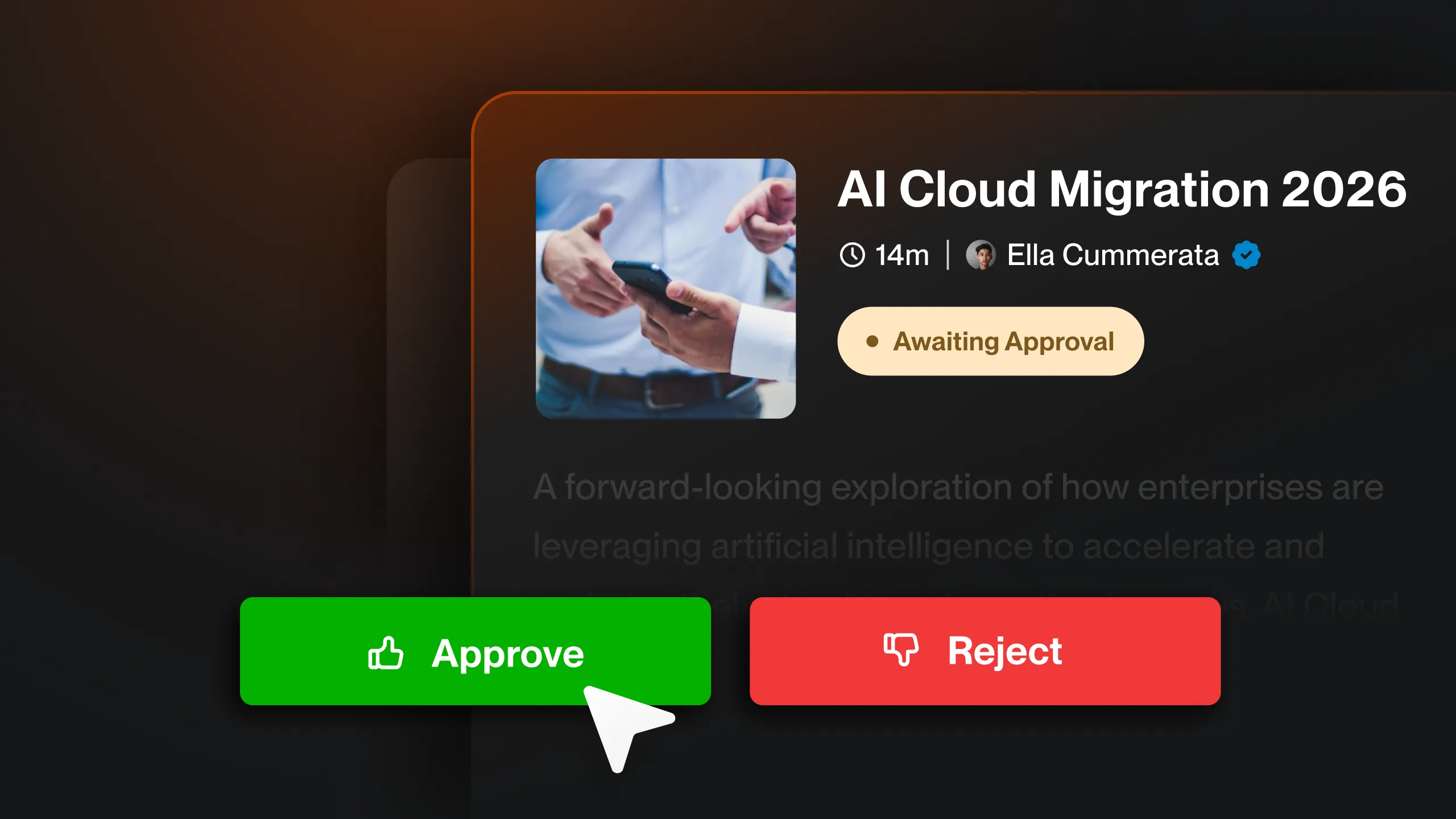AI Adoption
What Disjointed Communication Really Costs Your Organization During Change
Mar 31, 2025
When Your Organization Is Navigating Change, Every Message Matters
The real risk isn’t how it’s being said—it’s when the context doesn’t align.
When messages don’t match up, employees hear one thing from leadership, another from HR, and something completely different on the grapevine. That’s not a harmless mix-up; it’s a fast track to confusion, mistrust, and resistance.
Disjointed communication is more than a few missed emails or messy Teams threads.
It’s what happens when communication is scattered, uncoordinated, and reactive instead of strategic and intentional.
When no one owns the narrative, clarity falls through the cracks.
Clear communication isn’t a nicety—it’s a necessity.
It’s the difference between change that sticks or one that crashes.
If you’re not being intentional about how you communicate during change, you’re sabotaging the plan and setting the efforts up to unravel.
The Harsh Realities of Disjointed Communication
1. Erosion of Trust & Credibility
In a world where skepticism is sky-high, every word you communicate during change either builds trust or breaks it.
When employees hear mixed messages—or worse, feel like leadership is sugarcoating the truth—trust doesn’t just slip. It disappears.
According to the Edelman Trust Barometer 2025, employer trust has sunk to its lowest point in eight years.
Belief in CEOs? Cut in half since last year.
Even more alarming: 68% of people now believe business leaders intentionally mislead them with false information or overblown claims.
When Clarity Breaks, Change Fails
In a change environment, the moment transparency and alignment break down, ambiguity reigns.
When people don’t know what’s happening or who to trust, morale plummets and resistance skyrockets. In the end, your change efforts stall before they even get going.
Tigerhall’s all-in-one change activation platform transforms fragmented messaging into actionable communication—so you can cut through the noise and deliver change updates with clarity, consistency, and authenticity.
No more cold, corporate email blasts, digging through cluttered SharePoint folders, or scrolling endless PDFs that no one reads. Instead, deliver actionable change communication the way modern employees want to consume it—bite-sized, engaging, and human.
Think podcasts, videos, power reads, and more.
This way, your message doesn’t just land—it sticks.
2. Decreased Engagement & Buy-In
In any change initiative, you need people to listen—and more importantly, to care. That won’t happen if your communication is disjointed or top-down.
When employees feel left out of the conversation, disengagement creeps in fast.
The numbers don’t lie. Gallup’s 2024 State of the Global Workplace shows that highly engaged teams outperform others in productivity, profitability, and sales. But globally, less than a quarter of employees are engaged. The rest?
62% are disengaged, and 15% are actively checked out.
When employees don’t understand why change matters or how it affects them, they’re not leaning in—they’re mentally logging off.
When engagement drops, collaboration stalls, innovation flatlines, and even your leaders risk falling out of sync.
Tigerhall helps you turn communication into connection.
Keep employees engaged and heard with two-way conversations—with comments, mentions, likes, and reaction buttons that spark collaboration.
Go further by inviting real feedback through interactive forms such as polls, rating sliders, and more.
When employees feel involved, they stay invested throughout the change.
3. Increase of Errors & Misunderstanding
Change is already overwhelming—don’t make it worse with long-winded emails and irrelevant updates.
Your people are juggling enough without having to sift through 20-page documents packed with corporate jargon that give minimal insights.
When that happens, more often than not, something gets missed.
The result? Misunderstandings multiply, errors pile up, and in some cases, the impact goes beyond lost productivity.
Errors don’t just affect quality or customer satisfaction—they can damage your reputation.
For example, poor communication around safety protocols or compliance changes can lead to life-threatening accidents. The fallout? A PR nightmare and a costly loss of trust.
Avoid the chaos before it starts.
Tigerhall helps you deliver the right message to the right people—no-nonsense style.
Segment your message by role, function, region, and more to ensure every update is clear, relevant, and actionable—so nothing critical gets missed.
4. Delayed Decision Making
Change isn’t static. Information evolves, and so do the decisions tied to it.
Employees rely on timely, clear updates to know what’s expected of them day-to-day.
When that information is delayed or missing, they stall—and that hesitation costs.
Delayed decision-making creates a domino effect, disrupting productivity across multiple levels of the organization.
Left unchecked, this leads to missed opportunities—losing customers, delaying innovation, or falling behind competitors.
For the change team, keeping up with updates can be time-consuming, especially when juggling other business-critical priorities.
Tigerhall helps you communicate smarter, not harder.
Spend less time crafting comms and more time driving change with Tigerhall’s AI-powered Creator Studio.
Repurpose strategy decks or reports into podcasts and videos—ready to share in minutes.
Plus, speed up global alignment with instant translations in 30+ languages.
5. Unaddressed Concerns, Inconsistent Execution
Disjointed communication shuts down the feedback loop.
When employees feel like their concerns aren’t being heard—or worse, are being ignored—they stop speaking up.
This leads to:
Unaddressed issues
Inconsistent execution
Conflicting practices
Inefficient workflows
With Tigerhall’s analytics dashboard, you’ll never have to guess if your message is getting through.
Monitor engagement in real time and adjust your strategy as needed.
Use sentiment analysis to understand how different audiences are reacting via comments, reactions, and live stream chats—so you can address concerns before they spiral.
6. Financial and Operational Impact
The final and most tangible cost of disjointed communication?
Your bottom line.
Gallup’s research estimated disengagement costs the U.S. economy between $450 billion to $550 billion annually.
In today’s economy, that number is only going up.
When communication breaks down, the costs stack up:
Operational inefficiencies
Duplicated tasks
Missed deadlines
Turnover from frustrated employees
And turnover isn’t cheap. You’re looking at recruitment costs, onboarding time, and lost productivity.
Reduced headcount leads to reduced outputs, missed revenue, and stalled growth.
Are You Playing with a Broken Telephone?
Disjointed communication during change is like playing a game of broken telephone.
What started as a clear message ends up a confusing mess.
It’s frustrating.
It’s expensive.
And it’s all too common.
If you’re nodding along, you already know it’s time to change how you communicate—before it’s too late.
With Tigerhall, communicate where your people already are.
Skip the hassle of new platforms and bring Tigerhall straight into Microsoft Teams.
No onboarding. No friction. Just seamless integration and real-time alignment.



